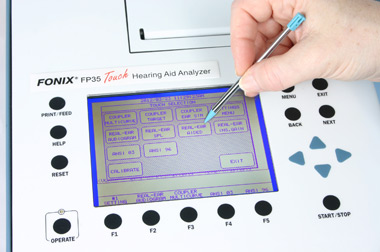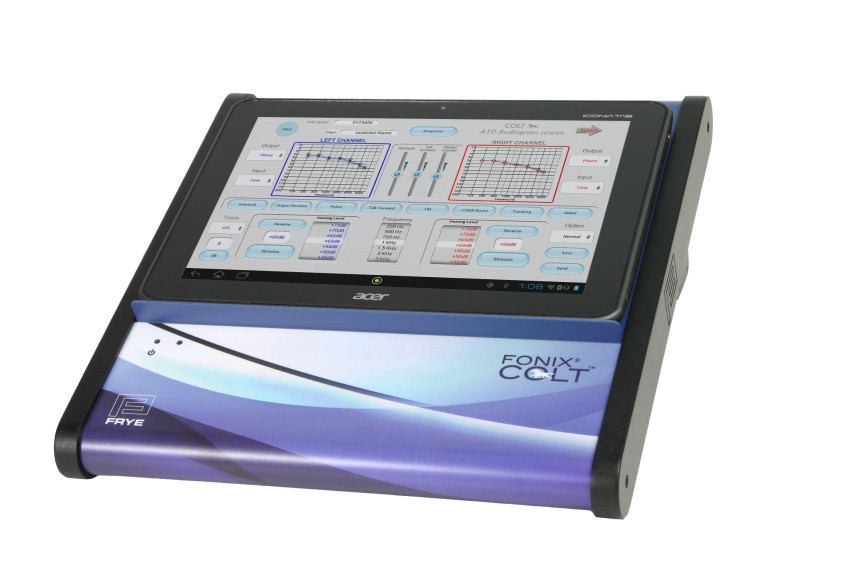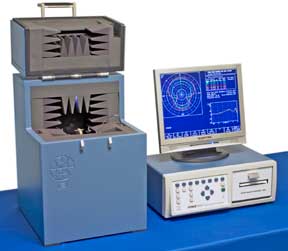Move your hearing aid fittings into the world of the touch screen! The new FP35 Touch adds a new interactive dimension to hearing instrument verification. Touch the screen to navigate to the desired test screen or to make changes to important settings. Swipe the screen and move to the next one or call up local menus—real control at your fingertips!

Frye Electronics has leaped ahead of the competition with a new, revolutionary audiometer built into an Android Tablet. With an intuitive touch-based interface that mimics the controls of a traditional audiometer, the FONIX COLT Audiometer is easy to use for both beginning and experienced clinicians.
Touch Interface
In the past, audiometers used push buttons and knobs to perform a variety of basic functions. These audiometers had limited functionality, but were generally easy to use because all the controls were in front of the user. Later-generation audiometers added new functionality, but often at the expense of the user interface, requiring users to use a mouse to navigate through multiple menus in order to adjust settings. The FONIX COLT Audiometer is a new third-generation audiometer, combining the easy-to-use controls and layout of a traditional audiometer with the advanced flexibility of a computer-based audiometer. No mouse or complicated menus are required for opera...

The FONIX 8000 is the world’s most advanced hearing aid test system, featuring the unique Polar Plot Sound Chamber, capable of performing automatic polar plot measurements of directional hearing aids. Although the results are not a replacement for laboratory testing using an anechoic chamber, the 8120 Polar Plot chamber provides the hearing health professional with a clinical tool for verifying approximate directionality characteristics of the hearing aid. As directional hearing aids continue to grow in popularity, this feature has become essential in the modern hearing aid clinic.

Cortical Auditory Evoked Potential (CAEP) measurements are used to detect whether particular sounds produce an electrical response in a patient’s brain. HEARLab provides the hearing health professional with an easy-to-use method of performing this measurement.
A transducer such as an insert earphone, bone vibrator, or sound field speaker is used to deliver the test signal to the patient who is passively alert. Electrodes placed on the patient’s head measure the cortical response. A statistical analysis of each response (a “p-value”) is automatically calculated to determine the probability that a CAEP signal was present. The clinician can verify this analysis with a visual examination of the measured cortical response.
CAEP can be tested on patients who are unable or unwilling to communicate to the clinician about whether they can hear a signal. This could include infants and small children who have not yet developed language skills, and adults who are...
